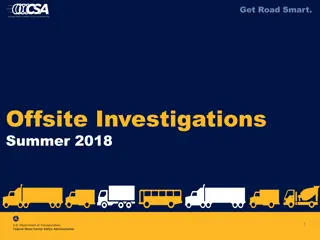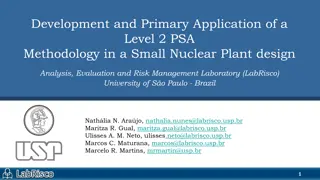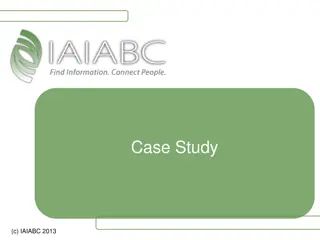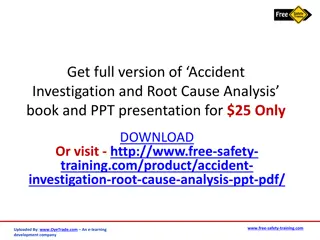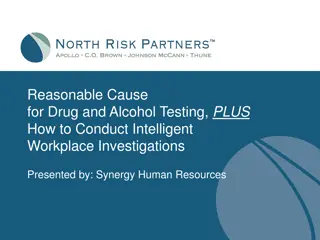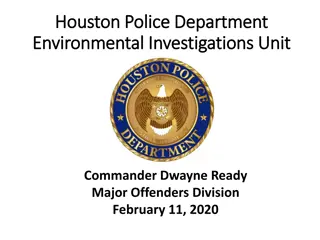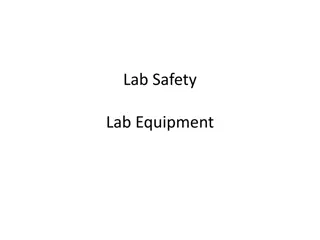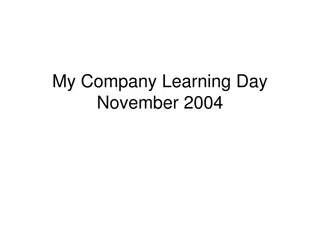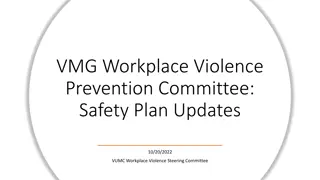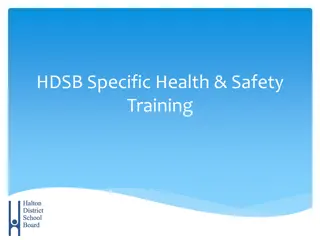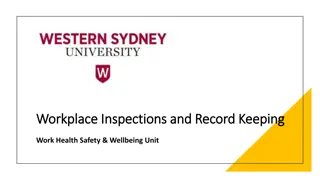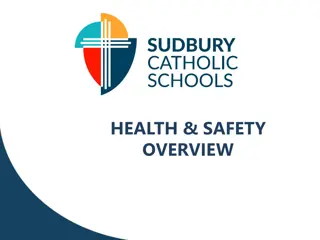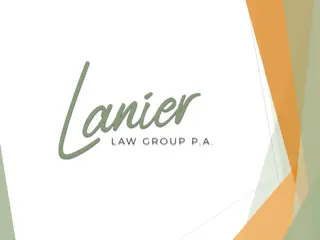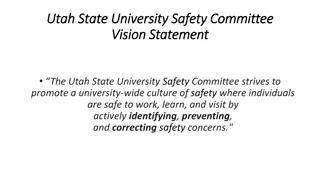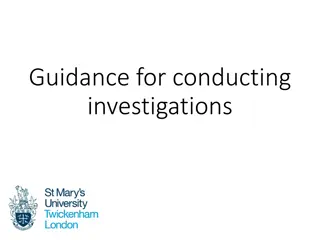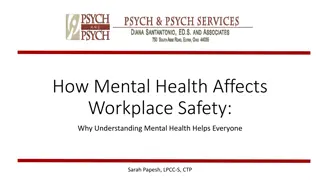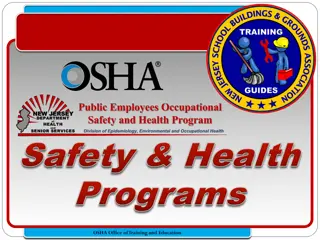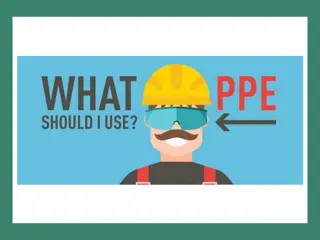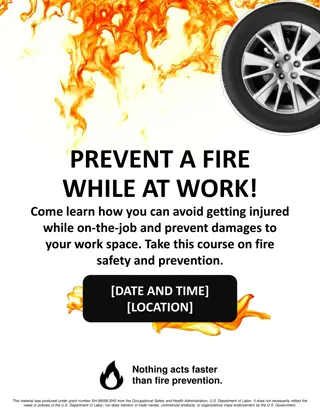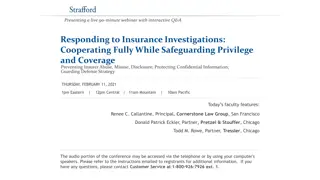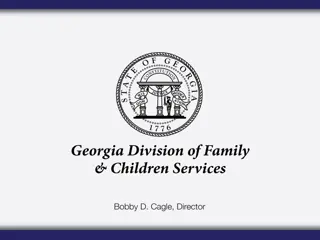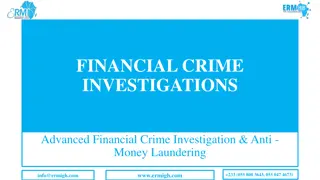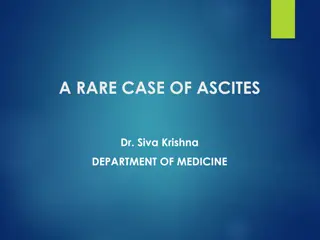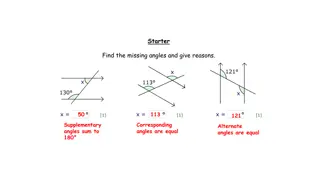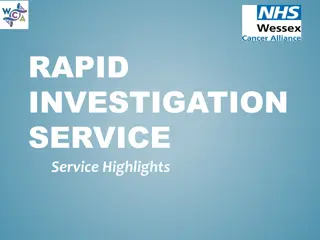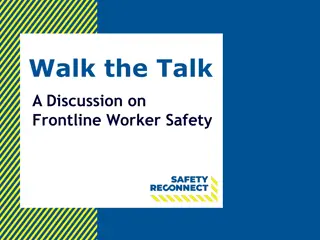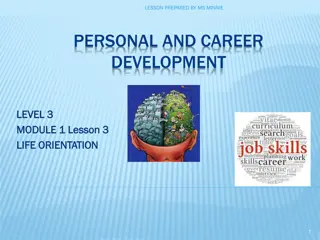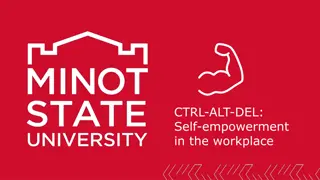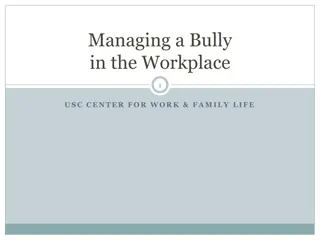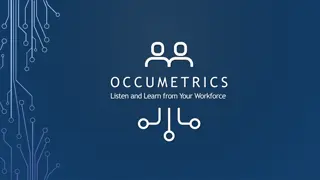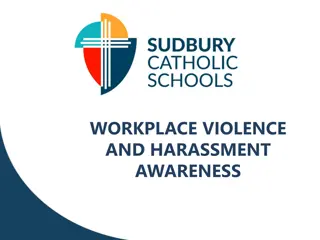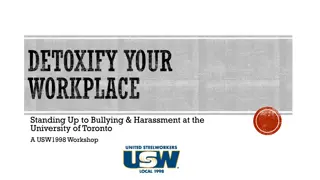Effective Accident Investigations for Safety in the Workplace
Understanding the importance of accident investigations and their objectives is crucial for workplace safety. This content covers the definition of accidents, accident investigation objectives, the purpose behind investigations, and who typically conducts them. It emphasizes the need for thorough investigations to prevent future incidents, highlighting the role of supervisors and JHSC representatives in identifying root causes and taking corrective actions. By focusing on policies, procedures, equipment, materials, environment, tasks, and people involved, organizations can effectively prevent accidents and promote a safer work environment.
Download Presentation

Please find below an Image/Link to download the presentation.
The content on the website is provided AS IS for your information and personal use only. It may not be sold, licensed, or shared on other websites without obtaining consent from the author. Download presentation by click this link. If you encounter any issues during the download, it is possible that the publisher has removed the file from their server.
E N D
Presentation Transcript
Accident Investigations Health and Safety Office
Accident Investigation - Objectives Understand the importance of the need for effective and thorough investigation of an accident Demonstrate practical skills required to respond and investigate an incident/accident in a consistent manner Make meaningful recommendations for preventive actions to reduce potential risks that may contribute to accidents
Accident Training Investigations - Objectives (cont.) Understand the investigator s critical role in the accident investigation and the accident reporting process Determine the cause(s) of an accident and make recommendations to help prevent a recurrence of a similar type of incident
What is an Accident ? An accident is an undesired event that results in physical harm to a person or damage to property.
Purpose of an Accident Investigation The purpose of an accident investigation is to prevent a recurrence of the accident. The focus should be on the accident, not the injury
Effective Accident Investigations What to Look for: Policies/Procedures Equipment Materials Environment Task People/Operators Accidents generally have more than one cause which enables investigators to get to the root cause
Who Investigates Accidents? Supervisors They know their people, the conditions and the job. They know how to get the information needed. They can take action to prevent a recurrence.
Who Investigates Accidents? JHSC Representative They are familiar with the people and workplace. They have a legal requirement to investigate Critical Injuries They have been trained in Accident Investigation
Who Investigates Accidents? Government and Business Agencies Ministry of Labour Ministry of the Environment Fire Department Officials Workplace Safety & Insurance Board
When To Investigate An Accident Immediately or ASAP ( If a Critical Injury, secure the scene and advise the MOL )
Critical Injury Defined The OHSA defines a critical injury as an injury of serious nature that: a) places life in jeopardy; b) produces unconsciousness; c) results in substantial loss of blood; d) involves the fracture of a leg or arm but not a finger or toe; e) involves the amputation of a leg, arm, hand or foot but not a finger or toe; f) consists of burns to a major portion of the body; or g) causes the loss of sight in an eye.
When A Critical Injury Occurs The accident scene must be preserved as per the legislation, No person shall interfere with, disturb, destroy, alter or carry away any wreckage, article or thing at the scene of or connected with the occurrence until permission to do so has been given by a Ministry of Labour Inspector, except for the purpose of: Saving life or relieving human suffering; or Preventing unnecessary damage to equipment or other property.
Critical Injury Continued The accident scene will remain secured and no work activity will be performed in the area until Health & Safety has been notified by the Ministry of Labour that the investigation is complete and normal work activities can be resumed. An investigation shall commence immediately. External agencies such as Ministry of Labour, Windsor Police Services, Coroner, etc. may take charge of the scene and conduct their own independent investigation. Health & Safety shall complete the Critical Injury Report Form (OHS-5.2.2b) and notify a certified JHSC member
What Equipment Is Required? Personal Protective Equipment Caution Tape Measuring Tape Graph Paper Pencils Lockout / Tagout Clipboard Camera Flashlight (with batteries) Emergency Phone Numbers Accident Investigation Forms
At the Accident Scene Control the Scene People are the first priority- make sure the area is safe to enter; send for help; administer first aid if it is safe to do so; Stop Ongoing Hazards Get personal protective equipment; provide emergency lighting, power, air, etc. Shut down equipment if safe to do so;
At the Accident Scene Secure the Scene and Protect Evidence Rope off the area or use guards or barriers Issue lock outs/tag outs for defective equipment Record evidence during investigation and make sure no one moves or destroys evidence
At the Accident Scene Collect Evidence Take notes, pictures, sketches of tools, equipment, layout, etc. Note air quality and environmental conditions, observe(foot prints, tire tracks); collect logs, chart, records. Record ID numbers of equipment and get maintenance records; Take measurements and dimensions.
At the Accident Scene Look for Contributing Factors: Housekeeping Floor/surface conditions Noise Air quality/temperature/weather Equipment malfunction Supervision Employee morale/attitude/health Alcohol/drug abuse
Immediate Causes Struck By Struck Against Slip/Trip Caught In, On, Between, or Under Fall On, In, or From Scraped / Rubbed Against Overexertion or Body Strain Contact with - Electricity - Heat or Cold - Radiation - Noise - Hazardous Materials
Basic Causes Lack of preventative maintenance Servicing or Moving Equipment Failure To Warn or Secure Tampering or Removing Safety Devices or no Safety Device Unsafe Working / Travelling Speed Awkward Working Posture or Position Incorrect Equipment Inadequate or Improper Work Practices
Root Causes Maintenance or design Abnormal Usage Excessive Wear and Tear Lack of Programs and Procedures Hazards not reported Lack of Skill or Knowledge Physical and/or Psychological Problems
Root Causes continued Condition of surfaces Inadequate ventilation Extreme temperatures and/or noise Inadequate housekeeping or lighting Improper Handling Wrong type of Materials Exposure to toxic Chemicals or Physical Agents
Equipment or Conditions Involved Equipment Metal Lab cart Specimen Blender Metal work counter electrical appliance plug-ins (cart & counter) metal sink Eyeglasses Fume Hood Conditions water on floor damaged equipment running water Ice and snow on ground
Accident Investigation Process Interview Witnesses Response Analysis and Assess Scene / Identify Witnesses Conclusions Preserve Evidence Recommendations Notification Follow up
Accident Investigation Forms Accident/Incident Investigation Report (OHS 5.2.2a) Campus Police Event Report
Who Are The Witnesses ? Eye Witness First Person (s) at the scene Witness Surrounding Events Witness Person Having Knowledge
Interview Process First - Get an overall summary Separate All Witnesses Interview Each Witness Alone and In Private Interview Eye Witnesses First Interview At Accident Scene (when safe to do so)
Effective Interview Technique Put person at ease Explain purpose of accident investigation Listen to the individual s version Ask the right questions at the right time Repeat the information given back to the individual Always thank person for their cooperation Immediately document critical information Provide drawings and photos where useful Probe for Basic/ Root Causes Keep the door open for further information
Interviewing Questions To Ask Where were you when the accident occurred? What were you doing at the time ? What did you see and hear ? What were the environmental conditions ? What was the injured worker doing at the time ? In your opinion, what caused the accident ? How might similar accidents be prevented in the future ?
Determining Root Cause: Interviewing Questions to Ask Ask WHY 5 times to determine root cause He was lying on the floor - Why? Because there was water on the floor - Why? Because there was a leak in the sink - Why? Because maintenance hadn t fixed it - Why? Because they weren t aware of the leak - Why? Because it wasn t reported by the department
Typical Investigation Who was injured? John Doe Slipped on spill on floor and struck his head. What happened? How to prevent a recurrence? All leaks should be reported to Maintenance. Spills should be cleaned up right away and a sign saying wet floor should be placed on the floor.
Recommendations & Follow-Up Have intermediate control measures been implemented prior to final corrective measure ? How effective are the control measures ? Has there been follow- up and an analysis of the corrective measures to ensure they have been implemented and are effective ? Have the intermediate or final corrective measures resulted in further hazards? Are the control measures sufficient?
ACCIDENT INVESTIGATION CONCLUSIONS Accidents generally have more than one cause Keep asking (5 times) WHY until you determine the root cause
Thank You ! For more information contact Health and Safety at ext. 4521 www.uwindsor.ca/safety


